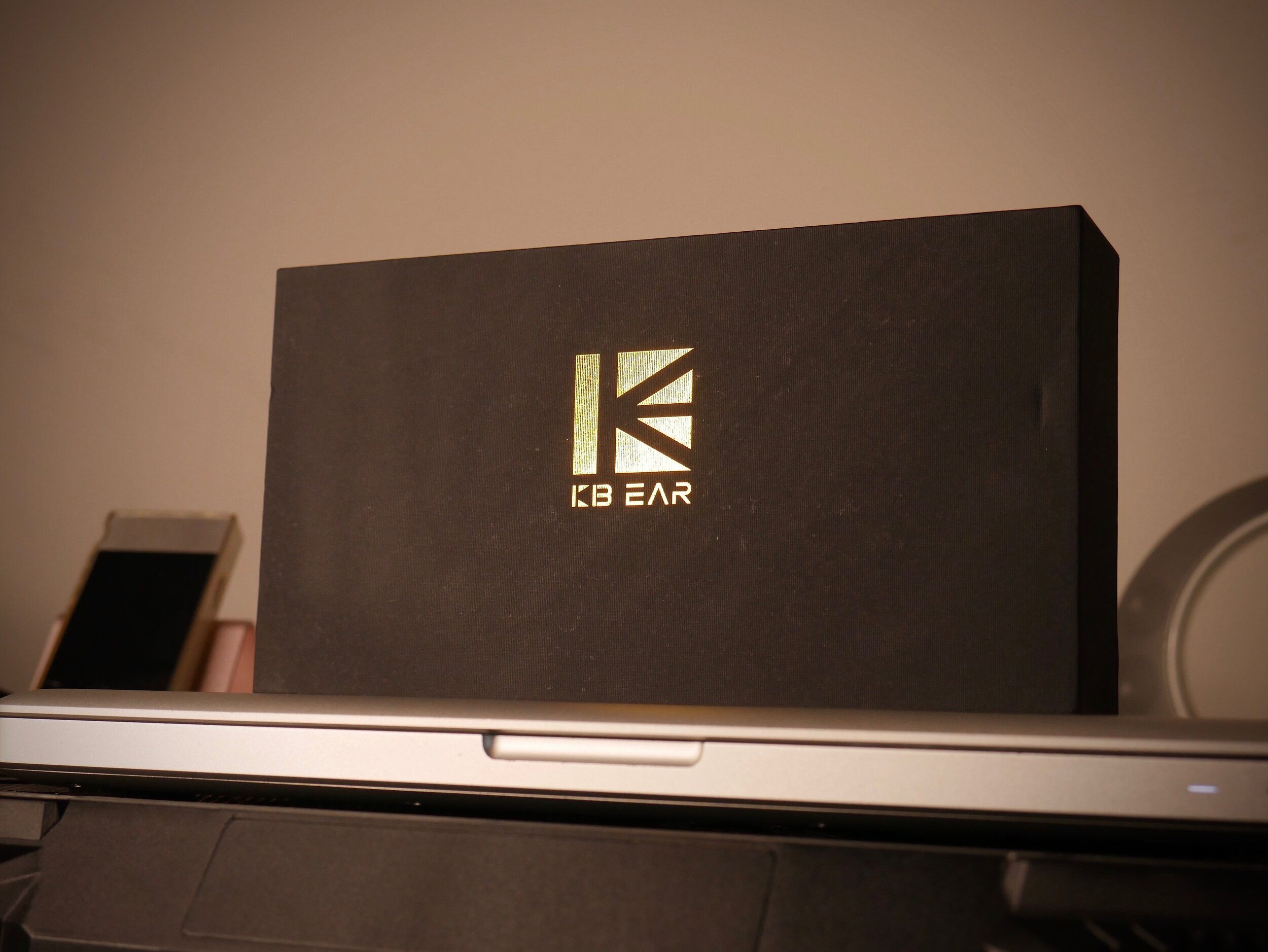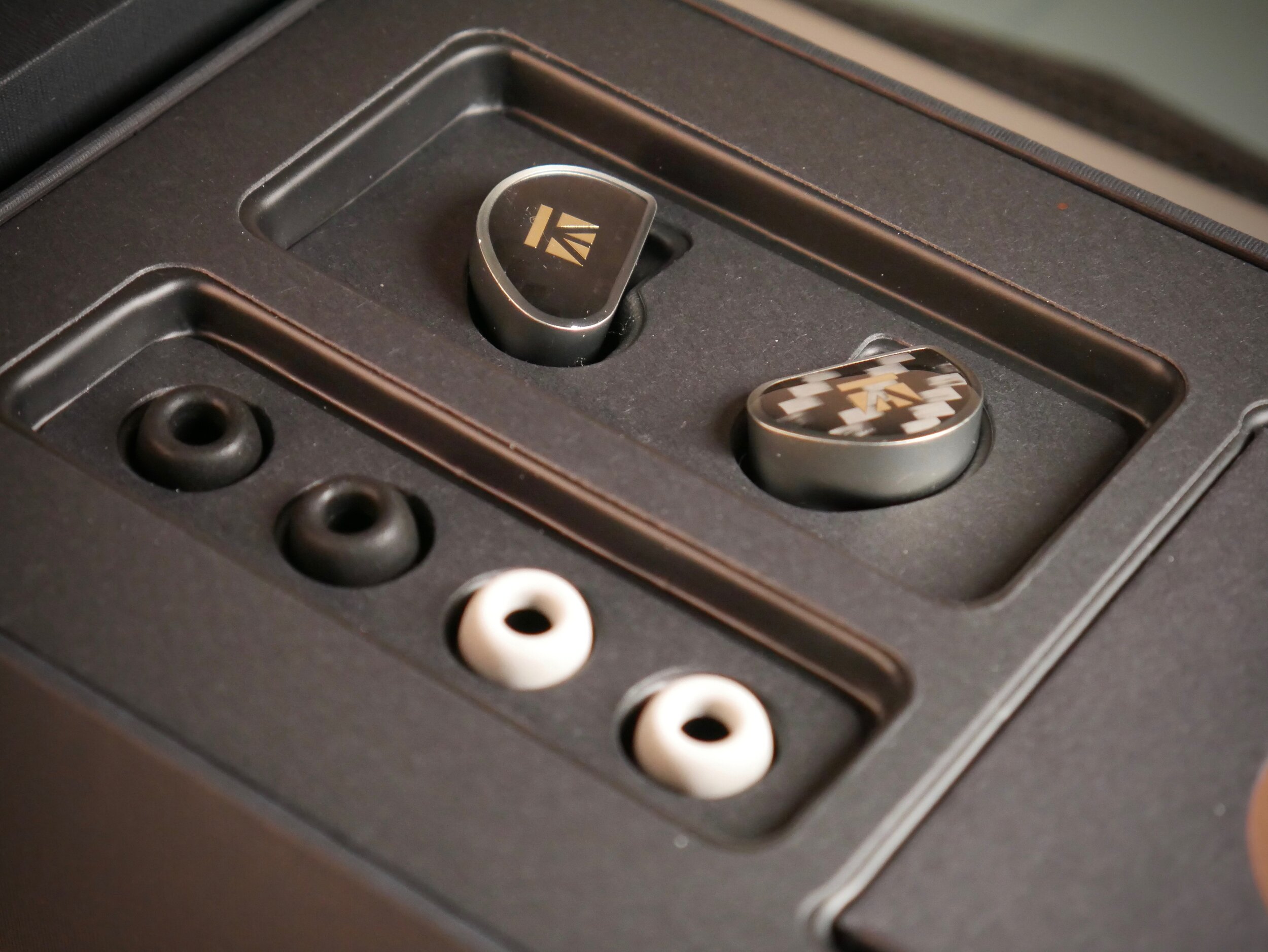Price: 70€
Where to buy: https://aliexpi.com/dsex
Specifications:
Impedance: 16Ω
Sensitivity: 102dB
Frequency response range: 20Hz-20 KHz
Driver configuration: single dynamic driver (“diamond-like carbon coated composite diaphragm”)
Thanks to AK Audio for the review sample.
KBEAR is a relatively new brand in the audio scene. I had the chance to try their Opal and claimed them as a false start. They sounded, without turns of words, bad. Especially for a dynamic driver. And it was a pity because the design was good and the cable wasn’t that terrible. Then I got the F1, the single BA: I had QC issues, unfortunately, and didn’t release a review yet. They solved them with the last batches, and I can be more gentle here because the resin F1 were totally hand crafted. And the sound wasn’t that bad, but it was pretty anemic. Then I tried the KB06, a sort of KZ with a KBEAR logo, which finally sounded nice. A classic v-shaped eastern IEM, with a surprisingly good fit due to some small dimensions. That was a good way, but I didn’t understand the need of another brand crafting the same earphones. So, I wasn’t that surprised when they came out with the Diamond, thinking they were another tasteless earphone. I was wrong.
Unboxing and first impressions
You can already tell from the unboxing experience that the Diamond are not your usual KBEAR. Honestly, they ain’t even your usual earphones. They come not just with a lot of accessories, but they actually are really nice ones: a 16 core cable (classic single-ended), two pairs of foam tips and a lot of silicon ear tips, as well as a fake leather carrying case, which is – differently from some competitors (looking at you, Tin HiFi) – large enough to store the IEMs and even a dongle or something else.
The IEMs are well-crafted, with a metallic body and a faceplate with a carbon pattern, which is not perfect but gives a nice feel. The nozzle is also made of metal and has the right position to stay inside the ear without hurting. The body is pretty large, though, so these won’t really stay inside your ears, but they will protrude significantly. Also, the foam tips are all medium to large measure, so I personally cannot use them, having pretty average ears.
Sound
My sources: FiiO M7 (standalone; to XDUOO XP-2 via Bluetooth; to XP-2 via line-out; to TOPPING NX4 via line-out), Dodocool DA106 (mainly to XDUOO XP-2 via line-out); Mi MIX 2 to XP-2 (via Bluetooth and USB) and NX4 (USB), to Zorloo ZuperDAC-S, to Audirect Whistle; MacBook Pro 2012 to Focusrite 2i2; MacBook Pro 2012 to iFi Zen DAC;
My music: Jon Hopkins, “Singularity”; Billie Eilish, “When do we fall asleep, where do we go?”; Coldplay, “Ghost stories”; Bon Iver (Discography); Jack Garratt, “Phase”; Jamie Cullum, “Taller”; Sia, “Colour the small one”; The Bloody Beetroots & Jet, “The great electronic swindle”; Jacob Collier, “In my room” and “Djesse (Vol.1)”; John Coltrane, “Giant steps”; Lauv, (Discography), Oh Wonder (Discography), Radiohead (Discography), a lot of Mozart, ecc..
My files: MP3, M4A, FLAC, ALAC, few DSDs (Pink Floyd), MQA (TIDAL).
There’s an important thing to say: the tuner of these earphones said you must use them with the stock cable and tips to obtain the best sound out of it, being pretty sensitive to changes due to their particular single dynamic driver. With the tips which fit my ears, I get a really underwhelming midrange, buried under the upper bass and sounding far. That can be tamed by using different eartips, even from the ones provided. I suggest using the ones with the bigger bores possible.
The general sound signature, however, doesn’t differ so much: that bass is powerful, more than I could ever need. It is powerful and it is not so quick to compensate: its decay is average, so you’ll get a sense of “oomph” sometimes, which you could enjoy but I suggest a careful choice of the source. For example, my iFi Zen DAC has a really nice “truebass” function, which you absolutely have to avoid: it is wonderful with bass-lacking earphones but in this particular situation it elevates it way too much. At least you won’t miss any, even at low low frequencies.
The midrange is not the best. When you mix vocals, you have to be careful that the lead one is well-centered. If you mistake with reverb, the risk is you lost the mid and put too much presence in the side. That’s the constant sensation I have here. Vocals don’t sound in your head, nor at the centre of the scene; they are diffuse, behind you, around you. And that’s pretty the only disadvantage of the Diamond. Their V-shape is too accentuated, leaving you with a giant bass and a pretty solid treble, both unfair to the mids. Speaking of treble, it is good. Nice extension, there’s enough air and the separation has been achieved. It is well-tuned, because picks aren’t there and sibilance (5-6k I believe) has rarely shown (Italian as a language has plenty and I listen to it often). I don’t think the burn-in period has changed anything. Imaging is on par with other models of the same price bracket, while the soundstage is pretty wide, I like it.
Comparisons
Tin HiFi T4: I’d rather the T4 because of a more balanced tuning – they still are fun, but they are more focused on the midrange than the Diamond and I need to hear them clearly. Still, the T4 aren’t the best ever for vocals. I’d say the T2 beat them two here. The overall package is very similar, but the cable provided with the Diamond is much better than the one of the T4. The fit is bad, personally, for both; but surely the T4 are smaller, so I have more chances of getting a good one. Design-wise they both are nice. For bass-heads I’d suggest the Diamond.
BLON BL-03: everything about the BLON is bad, except for the sound – and their design. So, if you want a more premium and complete experience, go for the Diamond. But the BL-03 really provide a rich sound, with a smooth treble, a clear midrange and a bass which is just a tad too bloated. If you need to spend as little as possible, I’d focus on the BLONs with upgraded cable and ear tips.
TRI I4: these are similar to the T3 by Tin HiFi, but the fit is completely different. Having a similar price tag, I felt like it was fair to add them to this list. I like them. They may need some burn-in – I’m not a believer, but I felt them more relaxed and open after breaking them in. Their stage is not crazy wide, not even as wide as the Diamond. But their precision is the best of this list, maybe due to their Knowles BA. I like them more if needed to monitor and not just to listen to music, they are closer to neutrality (yet still a bit far from there). Pretty nice accessories there, too.
Conclusions
Diamond is a recognizable name, far more than F1 or KB06. I think there’s more than a better tuning here; there’s a pretty successful marketing strategy. You ask for the Diamond, you remember them. Because of the driver, because of the name – well, it is essentially the same thing. And that’s why, even without my words, you may have considered this pair of IEMs before, even after the previous QC issues of the brand, even after their first DD earphone was a mess. Finally, KBEAR is doing things well. And TRI, their sister company, is doing fine too – even providing hybrid planars! That’s the right way. Diamonds are shiny. And that’s not just a statement.
Pros
Accessories
Build quality and materials
Tuning is much better than previous models
Punchy bass
Fair treble
Cons
Fit
Only one measure of foam tips
Midrange is underwhelming




















